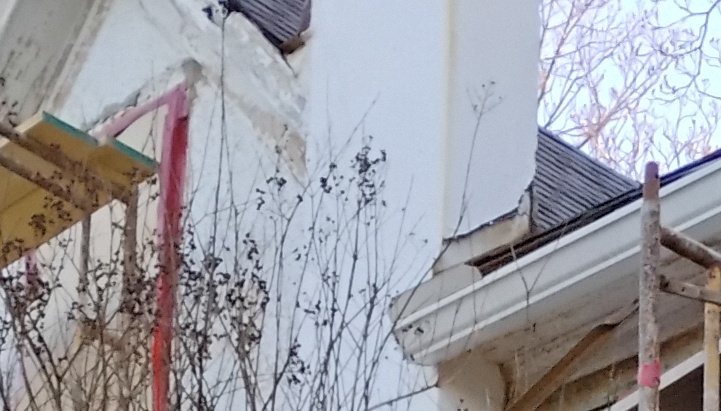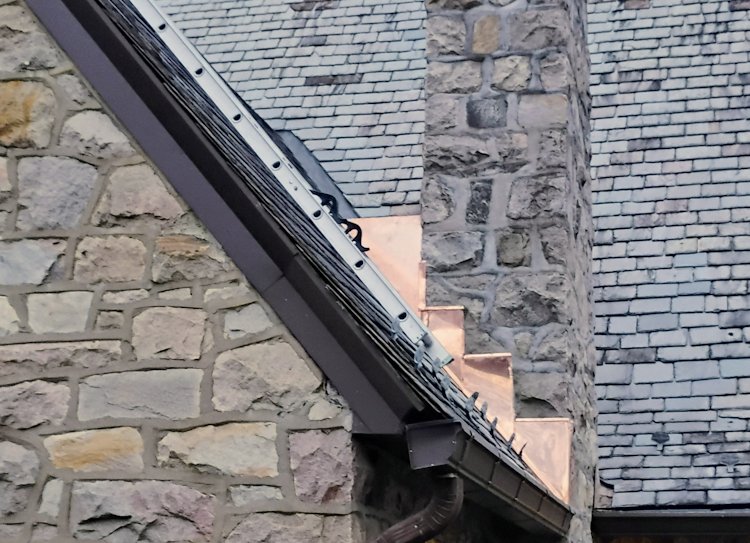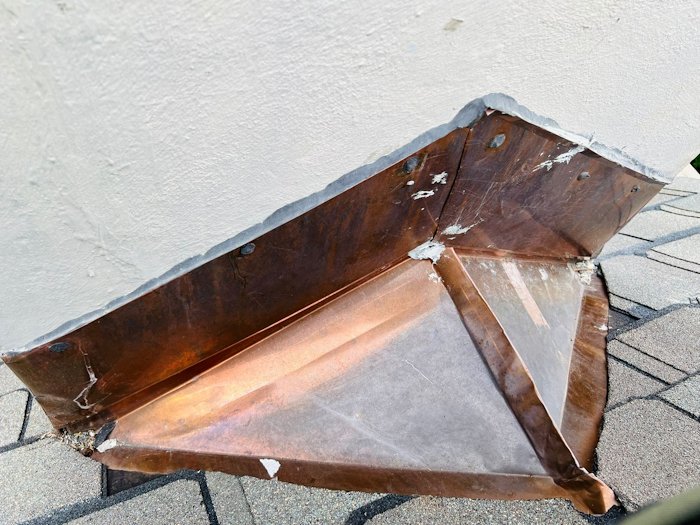Chimney flashing on Stucco ?
Mr. Bullard:
Thank you for this wonderful site. We live in south Texas along the coast. I thought that my builder, who recommended real 3 scratch stucco was going "cheap" with the tar paper instead of Tyvek. Glad that we used tar paper. We have had only a few minor, but normal cracks, at a few corners, windows, and bottom of joints. The chimney, however, has inadequate flashing, thus causing leaks on the high/top side at the base flashing.
The chimney flashing, behind the stucco, was installed incorrectly so that we can produce leaks by simply spraying a hose on the flashing and can watch the water immediately come inside, as we view from inside the chimney cavity. Moreover, we can spray the chimney directly on the same side and watch the water run down the chimney and curl around the bottom edge of the stucco and leak in at the same point. I believe we may have some counter flashing without step flashing. There are no leaks on the other sides and the bottom when we spray the hose....
Anyway, must a stucco chimney always be reflashed from the inside rather than the outside? I just want to treat the top side of the chimney as if it were a brick chimney, with a step flashing and counter flashing tied (slight cut) into the stucco. Can this be done properly?
Moreover, on one of the other, non-leaking sides of the chimney there is a 1-4th to 1/8th inch crack in the stucco running from almost top to bottom, which I have filled with some elastomeric caulk and repainted. At what point should we just rip off the entire stucco of the chimney, if we have to anyway for the flashing, and redo the entire chimney? Will a refloat ever hide a caulked crack...in case we don't redo all the stucco? The chimney is relatively small.

The photo shows where the stucco was cut off at the base of the chimney at the roof to put on new step flashing. A new counter flashing will be put on tight to the substrate, in this case blocks. After the stucco is patched, any water that penetrates the stucco should run down and exit over the counter flashing.
I feel redundant talking about chimneys all the time, but so many chimneys have the flashing poorly done or leak from the crown.
In this case, cutting the stucco off like the picture may be adequate. The high side of a chimney usually has a cricket, where the top side of the chimney has slopes framed in to divert water to the sides.

This chimney leaks because there is no flashing on the back side of the chimney. Flashing should go under the slates on the cricket and up the chimney at least 12 inches. On a steep roof like this the volume of rain running down will run up the back side. With 2 feet of snpw on the roof this chimney will leak some. Almost all chimneys leaks with 2 feet of snow.

Chimney repaired right. New copper cricket, copper valleys, copper step flashing, copper stair step counter flashing. We are plastering inside and the chimney has been leaking for years/
If you don't have a cricket with a steep roof, the chimney will more than likely leak. The flashing behind the chimney should be at least angled to one side, and the flashing needs to go up the roof a ways, and overlapped with shingles (or slate or whatever). It is well worth it to build a cricket.

You may have seen this picture here: The whole cricket was covered with copper. They did an amazing job, even though you can't see it from the ground. Too bad the chimney leaked because the flashing was over the stucco instead of over the stucco. We corrected this by cutting off the stucco above the flashing and putting on an S shaped flashing. In this case, we tore off the stucco completely because it was poorly done. The brainless people that did the stucco put it on over durock. The mortar was real crumbly and had to come off.
As far as filling the crack, it may be so high you can't notice it from the ground. If it bugs you, you would need to re coat the whole chimney to hide the crack. If you have to tear off the stucco anyway, it doesn't matter. The advantage of tearing off all the stucoo and re-doing it is that you know you are right. You can do the flashing right, overlap with tarpaper and tape, and make sure the stucco isn't crumbly.